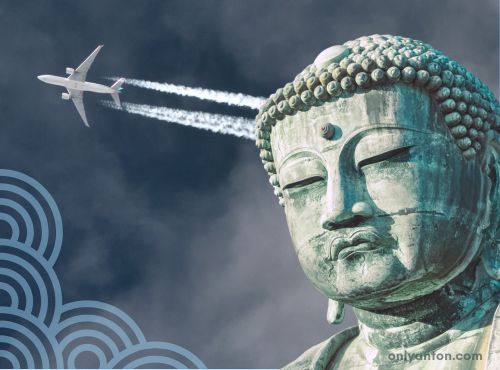
The Journey Begins
Travel, like life, rarely goes according to plan. Both can be filled with uncertainties, delays, and changes—often requiring us to adjust our expectations and embrace the unfamiliar. And yet, I’ve found that this unpredictability holds its own lessons. Over the years, Buddhist teachings have helped me embrace travel with greater mindfulness and acceptance. Buddhist principles, with their focus on non-attachment and impermanence, offer practical tools for navigating these challenges.
Whether through my training as an artist, martial artist, philosopher, or my life abroad in Asia, Buddhism has subtly shaped the way I see the world and engage with the journeys I undertake. I’m not a Buddhist—I’m what C. Pierce Salguero refers to as “Buddhish.” These teachings have become valuable companions on my travels, helping me to deal with unexpected detours or moments of discomfort. The wisdom of Buddhism encourages us to let go of rigid plans, stay present, and find beauty even in imperfection.
Context and Caveats
Before diving into the series, I would like to be clear: I approach these teachings from a Western perspective. Although I have a PhD in philosophy, which includes the study of Asian traditions, my interpretations are personal and practical. While some insights I’ve drawn may not be entirely unique to Buddhism, they resonate across many other traditions—Stoicism, Taoism, and Existentialism among them. I’m also offering these teachings not as doctrine but as wisdom I’ve found useful on my own path.
Travel itself invites us into moments of liminality and transformation. The more open we are to new experiences, the more deeply we can engage with our journeys. Here is where Buddhist principles shine—helping us embrace impermanence, release expectations, and remain present in every step.
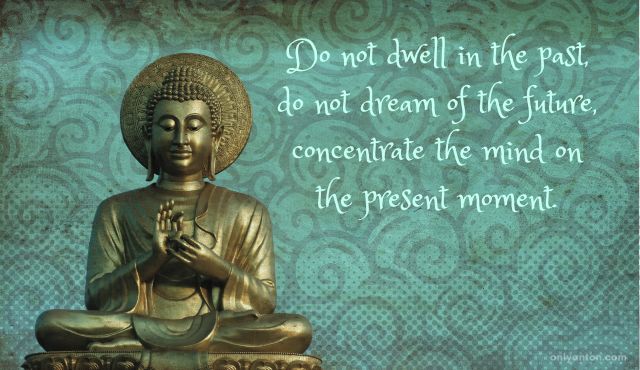
What is Buddhism?
Buddhism is a spiritual and philosophical tradition that offers timeless wisdom, transcending cultural and religious boundaries. It originated around 2,500 years ago with the teachings of Siddhartha Gautama, known as the Buddha. The Buddha presented his teachings as a Middle Way—a path that avoids the extremes of self-denial and indulgence, promoting balance in all aspects of life. Buddhism is not just a belief system but a way of living, encouraging self-discovery, compassion, and inner peace. At its core, it offers insights into the nature of suffering and provides practical guidance for achieving liberation through wisdom, ethics, and mental discipline.
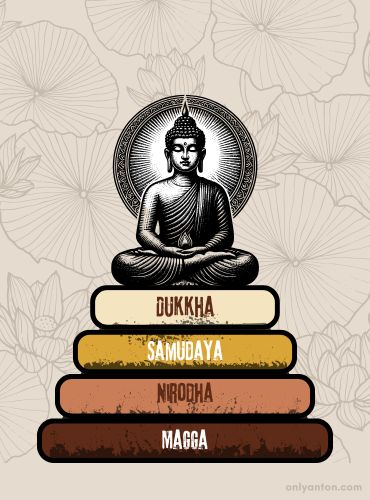
The Four Noble Truths
Central to Buddhism are the Four Noble Truths, which illuminate the causes of suffering and provide a path toward freedom:
- Dukkha (Suffering): Life is marked by suffering, dissatisfaction, and an underlying sense that things are never quite right.
- Samudaya (Origin): Suffering arises from craving, desire, and attachment to things that are impermanent.
- Nirodha (Cessation): Liberation from suffering is possible by letting go of desire and attachment.
- Magga (Path): The way to end suffering is through the Eightfold Path, a practical guide to balanced living.
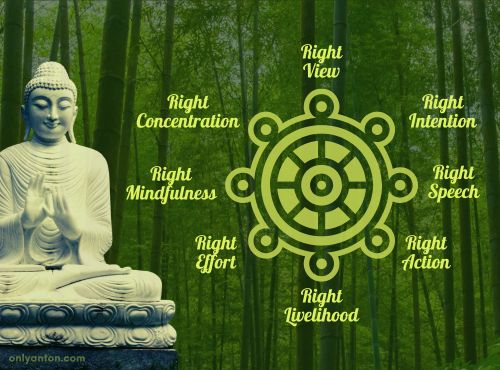
The Eightfold Path
The Eightfold Path is a set of interconnected practices that cultivates wisdom, morality, and mental discipline:
Wisdom (Prajna)
- Right View: Developing an understanding of the nature of reality.
- Right Intention: Cultivating wholesome intentions and ethical motivation.
Ethics (Sila)
- Right Speech: Speaking truthfully, kindly, and avoiding harmful words.
- Right Action: Engaging in ethical behaviour and compassionate conduct.
- Right Livelihood: Choosing work that aligns with ethical principles.
Meditation (Samadhi)
- Right Effort: Fostering positive qualities and reducing negative ones.
- Right Mindfulness: Cultivating awareness of thoughts, emotions, and actions in the present moment.
- Right Concentration: Developing focused mental states through meditation.
The Eightfold Path is not a linear journey but an ongoing practice, with these elements working in harmony. This idea resonates with the layered nature of travel, where experiences interweave to shape personal growth.
Schools of Buddhism
Buddhism has evolved into various schools, each with distinct practices and interpretations:
- Theravada Buddhism: The oldest tradition, emphasizing individual enlightenment. Practiced mainly in Cambodia, Laos, Myanmar, Sri Lanka, and Thailand, it focuses on the ideal of the arahant—one who achieves liberation from suffering.
- Mahayana Buddhism: This tradition emphasizes compassion and the Bodhisattva ideal—practitioners seek enlightenment not just for themselves but for all sentient beings. It is prevalent in China, Japan, Korea, Taiwan, and Tibet.
- Vajrayana Buddhism: A branch of Mahayana, Vajrayana integrates esoteric teachings and rituals. It is central to Tibetan Buddhism, as well as practices in Nepal and Mongolia.
- Zen (or Chan) Buddhism: Shaped by Taoist influence, Zen emphasizes simplicity, meditation, and direct insight into one’s inherent Buddha nature. Practitioners often use zazen (seated meditation) and koans (paradoxical questions) to spark sudden realizations about the nature of reality. Zen is practiced primarily in China, Vietnam, Korea, and Japan.
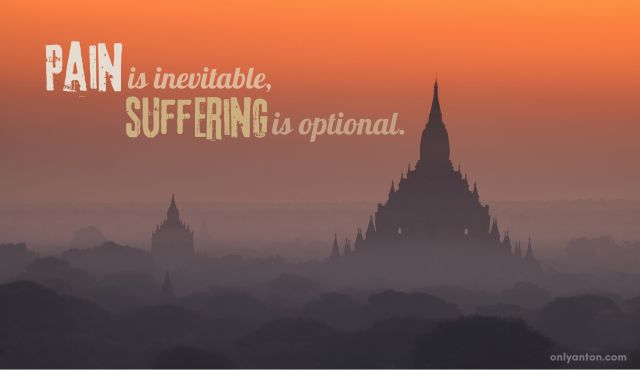
The Relevance of Buddhism for Travel
Buddhist teachings offer profound insights into how we experience the world, making them particularly relevant to travel. Both travel and Buddhism invite us to embrace change, release attachments, and discover beauty in the present moment. As travellers, we encounter unfamiliar places, people, and experiences. Through this openness to the unknown, we can discover parts of ourselves we may not have known.
Travel, especially when approached mindfully, encourages us to meet others where they are, just as Buddhism emphasizes compassion and empathy. Travel becomes a journey not just through physical landscapes but also through inner terrains. These moments of awareness can lead to personal transformation, helping us cultivate patience, humility, and acceptance.
Integrating Buddhist principles into our travels allows us to transform travel from a mere movement between destinations into a meaningful, enriching experience. With mindfulness and curiosity as our guides, we learn to embrace the impermanence of every journey, let go of rigid expectations, and find joy in even the smallest encounters—whether delightful or challenging. In this way, both Buddhism and travel show us that the journey itself holds as much value as the destination.
Whether it’s a brief weekend getaway or a transformative journey, travel itself can become a practice in mindfulness, inviting us to slow down, notice the details, and remain open to the lessons unfolding in every moment.
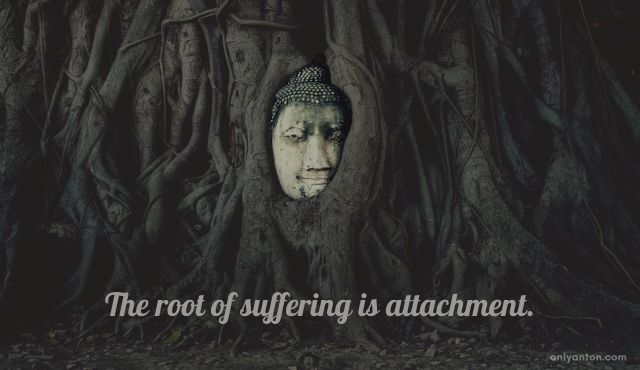
Overview of the Series
Each post in this series will explore a specific Buddhist teaching that has enriched my travel experiences. Here’s what you can expect:
- Managing Expectations: Learn how setting expectations impacts travel and how Buddhist wisdom can help us manage them gracefully.
- Seeing Reality As It Is: Explore the Buddhist notion of accepting reality and how it applies to the uncertainties of travel.
- The Art of Letting Go: Discover the freedom that comes from releasing attachments—whether to belongings, plans, or comfort.
- Understanding Suffering: Reflect on how travel challenges can offer insight into the nature of suffering and personal growth.
- Mindfulness and Movement: Stay present during transit and embrace the journey, not just the destination.
- Cultivating Gratitude: Find joy in the small moments and develop an appreciation for the experiences travel offers.
- Generosity and Compassion: Connect with others on your journey through acts of kindness and empathy.
- Authenticity and Self-Awareness: Use travel as a mirror to discover who you are when faced with new environments and challenges.
This series will offer personal stories, practical insights, and reflections on how these teachings can transform your travels. Each post will focus on a particular teaching, avoiding unnecessary overlap between topics whenever possible. While concepts such as gratitude and mindfulness may appear throughout the series, they will be explored in ways that are specific to each context. This approach ensures that the advice remains practical, actionable, and relevant to the main topic at hand.
Conclusion
This series is not just about me sharing insights. It’s an invitation to explore the wisdom of Buddhism through your own travels. Whether you’re heading out on your first trip or a seasoned traveller, I hope these teachings inspire you to travel more mindfully. Each journey offers lessons if we are willing to listen.
What About You?
As we embark on this journey together, I encourage you to share your own experiences. Have you ever found wisdom on the road? How do you manage expectations or find peace in unexpected situations? Feel free to share your thoughts and stories in the comments. Stay tuned for the next post in the series, where we explore the art of managing expectations.
Glossary of Buddhist Terms
Here’s a brief list of terms you might encounter throughout the series:
- Anicca: Impermanence, the idea that all things are in constant change.
- Dukkha: Suffering or dissatisfaction, central to the Buddhist worldview.
- Dharma: Teachings or truth, often referring to the teachings of the Buddha.
- Karma: The principle of cause and effect through intentional actions.
- Metta: Loving-kindness, a practice of cultivating goodwill toward all beings.
- Nirvana: The cessation of suffering and the end of the cycle of rebirth.
New terms will be introduced throughout the series as needed, offering deeper insights into the teachings relevant to travel.
Further Reading and Resources
Related posts on Only Anton
- Mindful Travel: Finding Meaning in Our Journeys: Explore mindful travel: aligning intentions with experiences, avoiding overplanning, and embracing spontaneity for a meaningful journey.
- Travel and Philosophy: Discover how the connections between travel and philosophy can inform our journeys and give us mindful insights into cultures.
- Sublime Travel: Making Your Trip Awesome, not Awful: Learn how to incorporate awe-inspiring moments into your travels with practical tips on balancing the sublime for memorable journeys.
External Links
These external resources can help you explore Buddhism further, offering philosophical depth and practical insights into Buddhist practices.
Books
- Buddhish: A Guide to the 20 Most Important Buddhist Ideas for the Curious and Skeptical by C. Pierce Salguero (2022): A contemporary and accessible introduction to key Buddhist concepts, ideal for those exploring Buddhism without the need for strict adherence. Look for a copy at your local library, online, or buy one here.
- The Art of Travel by Alain de Botton (2014): An insightful exploration of the philosophy behind travel, reflecting on how journeys can shape and enrich our inner lives. Find it online, at a library, or get your copy here.
- Zen and the Art of Motorcycle Maintenance by Robert M. Pirsig (1974): A philosophical journey blending elements of Zen, travel, and personal exploration. Look for it online, at a local library, or get a copy here.
Articles and Encyclopedic Entries
- “Buddha,” Stanford Encyclopedia of Philosophy: A concise yet thorough introduction to the Buddha, his teachings, and philosophical themes.
- “Buddhism,” Encyclopaedia Britannica: An overview of the foundational practices in Buddhism.
Websites and Reputable Resources
- Access to Insight: A comprehensive collection of Theravāda Buddhist texts, translations, and teachings.
- Tricycle: The Buddhist Review: An online magazine offering articles, interviews, and resources on Buddhist practice in modern life.
- Lion’s Roar: A resource offering teachings, commentary, and meditation guides for those interested in contemporary Buddhism.
- Gaia House: A helpful glossary of Buddhist terms.




